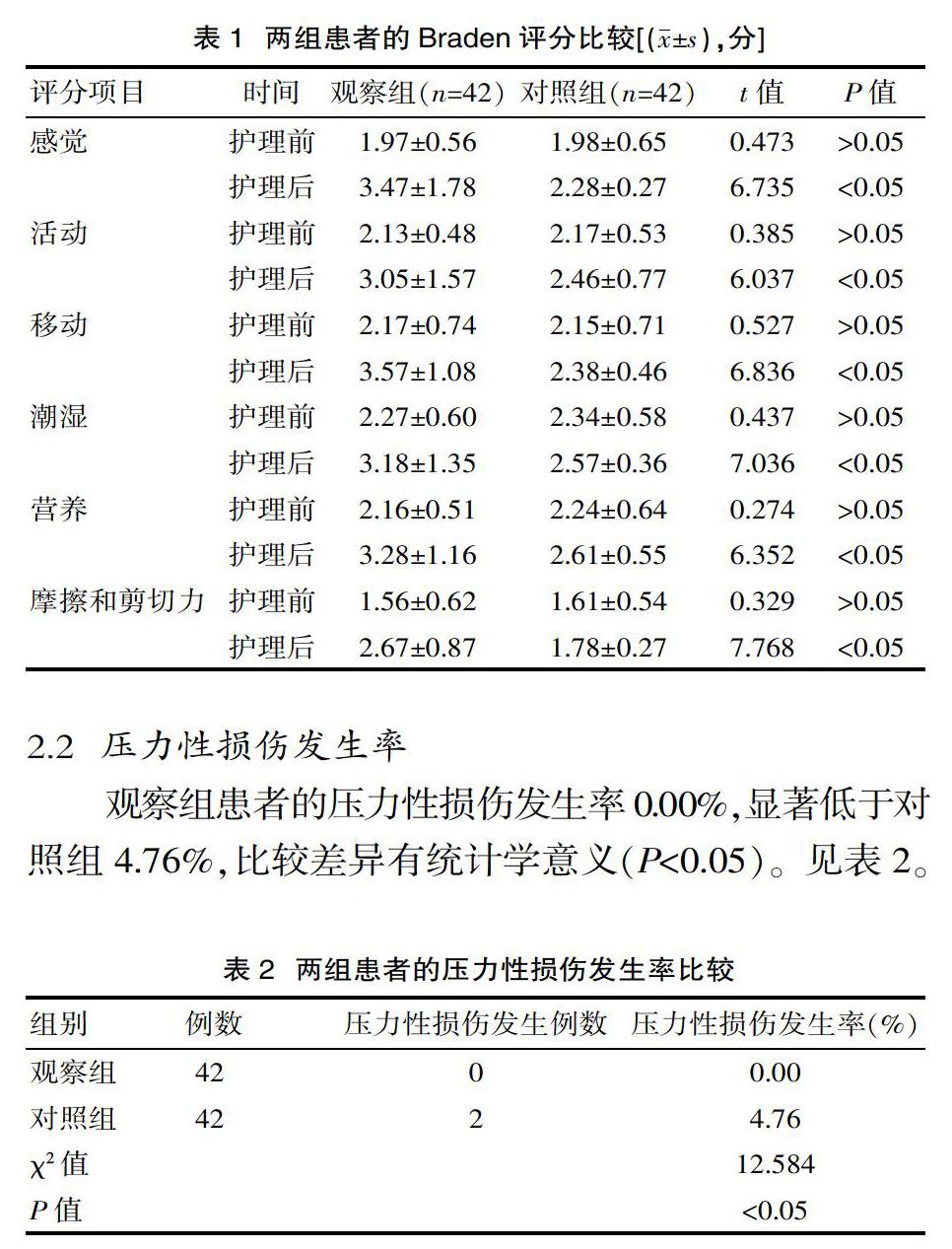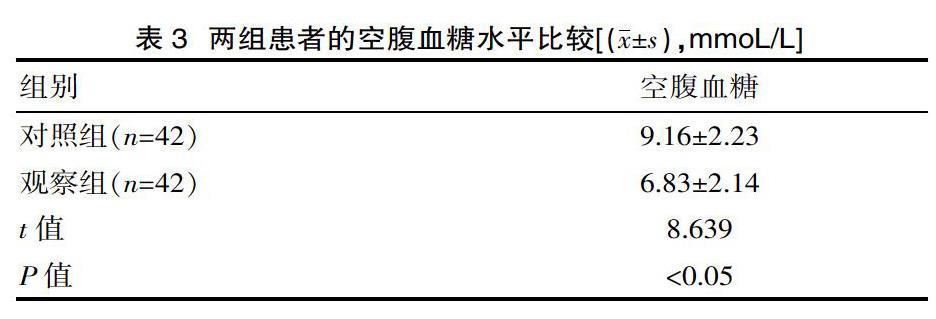预见性护理在ICU重症颅脑损伤合并糖尿病患者预防压力性损伤中的应用
2020-12-23陈晗
陈晗


[摘要] 目的 探讨预见性护理在ICU重症颅脑损伤合并糖尿病患者压力性损伤预防中的应用效果。方法 从2018年3月—2019年12月阶段在该院ICU住院治疗的重症颅脑损伤合并糖尿病患者中选取84例,根据护理方法分为观察组和对照组,每组42例。在ICU治疗期间,对照组给予常规压力性损伤护理,观察组则给予压力性损伤预见性护理。结果 两组患者护理前的各项Braden评分差异无统计学意义(P>0.05);经护理干预后,观察组患者的各项Braden评分,均显著高于对照组(P<0.05)。观察组患者的压力性损伤发生率0.00%,显著低于对照组4.76%(P<0.05)。观察组患者的空腹血糖水平显著低于对照组(P<0.05)。结论 预见性护理能够有效规避ICU重症颅脑损伤合并糖尿病患者的压力性损伤高危因素,从而显著降低压力性损伤发生率,且利于促进患者的血糖控制。
[关键词] 预见性护理;ICU;重症颅脑损伤;糖尿病;压力性损伤;预防
[中图分类号] R47 [文献标识码] A [文章编号] 1672-4062(2020)11(a)-0145-03
[Abstract] Objective To explore the effect of predictive nursing in the prevention of severe head injury combined with diabetes mellitus in ICU. Methods From March 2018 to December 2019, 84 patients with severe brain injury and diabetes were selected from ICU of the hospital. According to the nursing methods, they were divided into observation group and control group, 42 cases in each group. During the treatment in ICU, the control group was given routine nursing care of stress injury, while the observation group was given predictive nursing care of stress injury. Results There was no statistically significant difference in Braden scores between the two groups of patients before nursing (P>0.05); after nursing intervention, the scores of Braden in the observation group were significantly higher than those in the control group(P<0.05). The incidence of pressure injury in the observation group was 0.00%, significantly lower than that in the control group 4.76%(P<0.05). The fasting blood glucose level in the observation group was significantly lower than that in the control group(P<0.05). Conclusion Predictive nursing can effectively avoid the high risk factors of stress injury in ICU patients with severe craniocerebral injury and diabetes, so as to significantly reduce the incidence of stress injury, and promote the blood glucose control of patients.
[Key words] Predictive nursing; ICU; Severe craniocerebral injury; Diabetes mellitus; Stress injury; Prevention
重癥颅脑损伤属于临床上的一种危急重症,严重危害患者的生命健康。随着糖尿病发病率的升高,使得临床接诊的重症颅脑损伤合并糖尿病患者明显增多,这给临床治疗和护理均带来较大的难度[1]。对于重症颅脑损伤合并糖尿病患者来说,由于患者病情较重,需绝对卧床,加之受到糖尿病的影响,导致这类患者成为了ICU压力性损伤的高发人群[2]。而对于重症颅脑损伤合并糖尿病患者来说,一旦发生压力性损伤,则会患者带来较大的痛苦,同时还会影响患者的治疗效果,危害甚大[3]。因此,积极地采取有效的手段来预防重症颅脑损伤合并糖尿病患者发生压力性损伤,是非常重要的[4]。该研究以2018年3月—2019年12月在该院ICU住院治疗的84例重症颅脑损伤合并糖尿病患者为例,对预见性护理在ICU重症颅脑损伤合并糖尿病患者压力性损伤预防中的应用效果进行了分析,现报道如下。
1 资料与方法
1.1 一般资料
